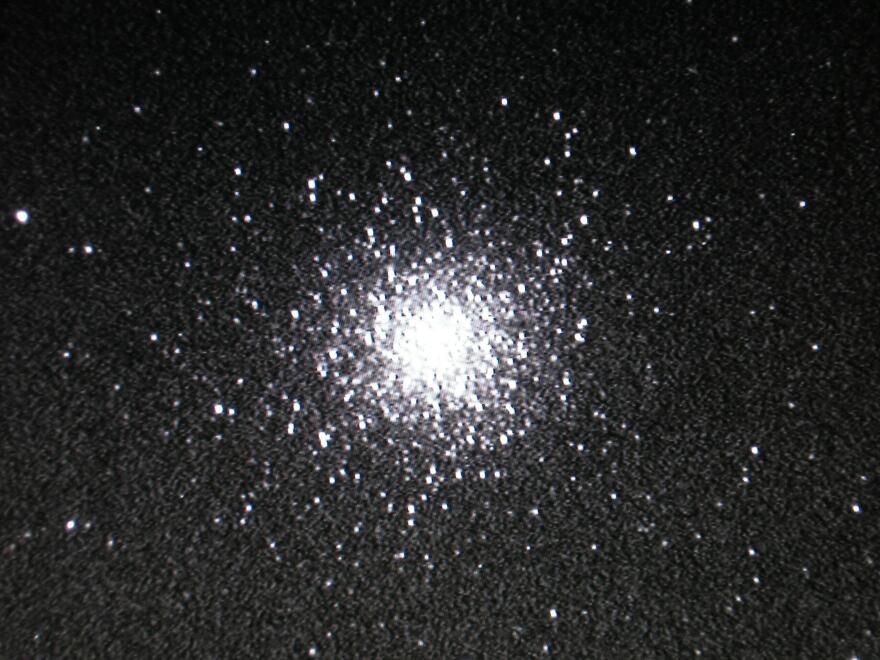For May 2019, the waning crescent moon passes just south of Venus in the dawn, both rising about 6 a.m. CDT. The moon is new on May 4. The waxing crescent passes three degrees south of Mars on May 7. The first quarter moon is May 11, and the May full moon, the Flower of Strawberry Moon, is on May 18. The waning gibbous moon passes just south of Jupiter on the morning of May 20, then even closer to Saturn on May 22. The last quarter moon is on May 26.
While the naked eye, dark adapted by several minutes away from any bright lights, is a wonderful instrument to stare up into deep space, far beyond our own Milky Way, binoculars are better for spotting specific deep sky objects. For a detailed map of northern hemisphere skies, visit skymaps.com and download the map for the new month; it will have a more extensive calendar, and list of best objects for the naked eyes, binoculars, and scopes on the back of the map. Also available is wonderful video exploring the sky, available from the Hubble Telescope website.
You can also get more information from Sky and Telescope: skyandtelescope.com/observing/astronomy-podcasts/
Mercury and Venus are both too close to Sun to be easily seen this month. Mars is the only evening planet, faint and distant in the west, moving from Taurus into Gemini by midmonth. As May begins, Jupiter rises in the SE in Ophiuchus about midnight, and about 10 p.m. by month’s end. Saturn is farther east in teapot of Sagittarius, and rises about two hours later. Both will be well placed for evening gazes by mid-June.
The winter constellations will soon be swallowed up in the Sun’s glare, but Orion is still visible, with its famed Orion Nebula, M-42, seen below the three stars marking his famed belt. Dominating the southwest is the Dog Star, Sirius, brightest star of the night sky. When Sirius vanishes into the Sun’s glare in two months, this sets the period as “Dog Days.”
The brightest star in the NW is Capella, distinctively yellow in color. It is a giant star, almost exactly the same temperature as our Sun, but about 100X more luminous. Just south of it are the stellar twins, the Gemini, with Castor closer to Capella, and Pollux closer to the Little Dog Star, Procyon.
Overhead, the Big Dipper rides high. Good scouts know to take its leading pointers north to Polaris, the famed Pole Star. For us, it sits 30 degrees (our latitude) high in the north, while the rotating earth beneath makes all the other celestial bodies spin around it from east to west. If you drop south from the bowl of the Big Dipper, Leo the Lion rides high. Note the Egyptian Sphinx is based on the shape of this Lion in the sky.

Taking the arc in the Dipper’s handle, we “arc” SE to bright orange Arcturus, the brightest star of spring. Cooler than our yellow Sun, and much poorer in heavy elements, some believe its strange motion reveals it to be an invading star from another smaller galaxy, now colliding with the Milky Way in Sagittarius in the summer sky. Moving almost perpendicular to the plane of our Milky Way, Arcturus was the first star in the sky where its proper motion across the historic sky was noted, by Edmund Halley. Just east of Arcturus is Corona Borealis, the “northern crown”, a shapely Coronet that Miss America would gladly don, and one of few constellations that look like their name. The bright star in the crown’s center is Gemma, the Gem Star.
Spike south to Spica, the hot blue star in Virgo, then curve to Corvus the Crow, a four sided grouping. Note Jupiter now near Spica. The arms of Virgo harbor the Virgo Supercluster of Galaxies, with thousands of “island universe” in the spring sky.
To the northeast Hercules rises, with his body looking like a butterfly. It contains one of the sky’s showpieces, M-13, the globular cluster faintly visible with the naked eye. Find it with binoculars midway on the top left wing of the cosmic butterfly, then take a look with a larger telescope and you will find it resolved into thousands of stars! Our featured photo is by EAAA member Rick Hogue with his 7” refractor telescope.
Events:
Stargaze at Big Lagoon State Park: Sunset April 27. Located at east parking lot near the observation tower. More dates include: May 25, June 22, July 27, August 24, September 21, and October 19
Sky Interpretation Sessions: May 3, sunset. Battery Worth Picnic area. Arrive early before park gate closes. Event is free, but park admission fees still apply. More dates include: May 31, June 28, July 26, Aug. 30 and Sept. 27.
Escambia Amateur Astronomers Stargaze: May 10 & 11, sunset. Gulfside Performance Pavilion on Pensacola Beach. More dates include: June 7 & 8, Aug. 9 & 10, Sept. 6 & 7, and Oct. 4 & 5.
Escambia Amateur Astronomers Monthly Club Meeting: May 17, 7 p.m. Pensacola State College, Room 1775. For more information on the Escambia Amateur Astronomers, join us on Facebook at “Escambia Amateur Astronomers,” visit our website at www.eaaa.net or call our sponsor, Lauren Rogers at Pensacola State at 484-1155 or lrogers@pensacolastate.edu. To be added to our astro alerts for gazes, ISS passes, club photos, etc., contact Dr. Wooten at wwooten@pensacolastate.edu and we will put you on our e-mail list serv.
Dr. John Wayne Wooten has been teaching science since 1970, with a special concentration on astronomy. He received his Doctor of Education in Astronomy from University of Florida in 1979. He was an educator at Pensacola State College since 1974 and University of West Florida since 1984 before retiring in 2017. He still continues to teach distance learning astronomy for Tennessee colleges. He and his wife, Merry, have been married since 1980 and they have two sons, Michael and Trevor.

